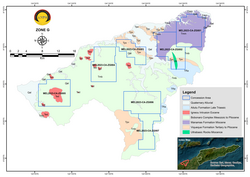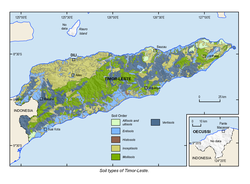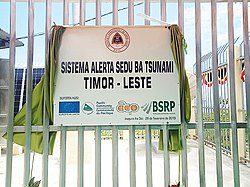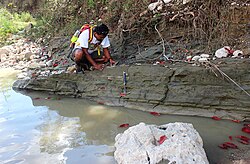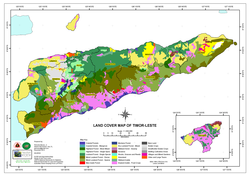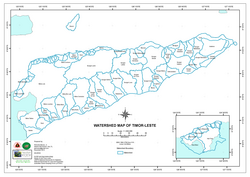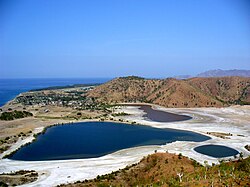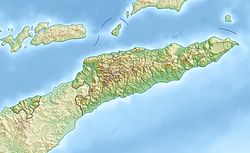Timor-Leste Geological map of zone B
Autor/Urheber:
Autoridade Nacional do Petróleo e Minerais
Shortlink:
Quelle:
Größe:
2560 x 1811 Pixel (1633774 Bytes)
Beschreibung:
The area for metallic and minerals other than construction materials Mining Activities within Zone B has an estimated total area of 2,880 km2 and covered area of Baucau, Viqueque, and Manatuto Municipalities. This zone has a total of eleven (11) concession areas on offer for tender. The area within Zone B composed of lithologies mainly from Bobonaro Complexes, Baucau Formation, Viqueque Formation, Aitutu Formation, Lolotoi Formation, and Cablac Formation, with some minor Barique Formation, Wailuli Formation, Quaternary Alluvial and Quaternary Fan Deposit (Figure 4). Previous studies carried out in this zone has shown that there is indication for metallic such as copper, manganese, chromium, zinc, gold and silver, including non-metallic minerals such as gypsum, limestone, marble, dolerite, and basalt (UN-ESCAP 2003, Lay et al. 2017, IPG 2020; ANPM 2022a, b).
Copper associated with gold are the most notable metallic minerals within this zone based on the previous studies. Copper minerals observed within this zone exists as two different types based on the observation in the field. The primary copper mineral, crystallised as chalcopyrite that was found in some area within Baucau Municipality, is associated with sphalerite; and secondary copper minerals occur as malachite, chrysocolla and rarely azurite. The mineralisation is typically occurred in association with quartz-carbonate veins, or hosted directly within serpentinites or igneous rocks within the area. It is suggested that the likely mineralisation styles for the copper, gold and its associated silver is the Cyprus-type volcanogenic massive sulfides (VMS) related to Ophiolites for mineralisation in Ossu area (UN-ESCAP 2003). The copper mineralisation within the Baucau Municipality area has been noted as early as in 1937 by the work of Allied Mining Corporation.
Lizenz:
Public domain
Credit:
Relevante Bilder
Relevante Artikel
Geographie OsttimorsDie Geographie Osttimors wird durch seine Lage im Übergang von Asien zu Australien geprägt. Osttimor ist das einzige Land Asiens, dessen Staatsgebiet komplett südlich des Äquators liegt. Das Territorium umfasst nicht nur die östliche Hälfte Timors, sondern auch die Exklave Oe-Cusse Ambeno, welche an der Nordküste des indonesischen Teils der Insel gelegen ist, sowie die beiden kleinen Inseln Atauro und Jaco. .. weiterlesen





